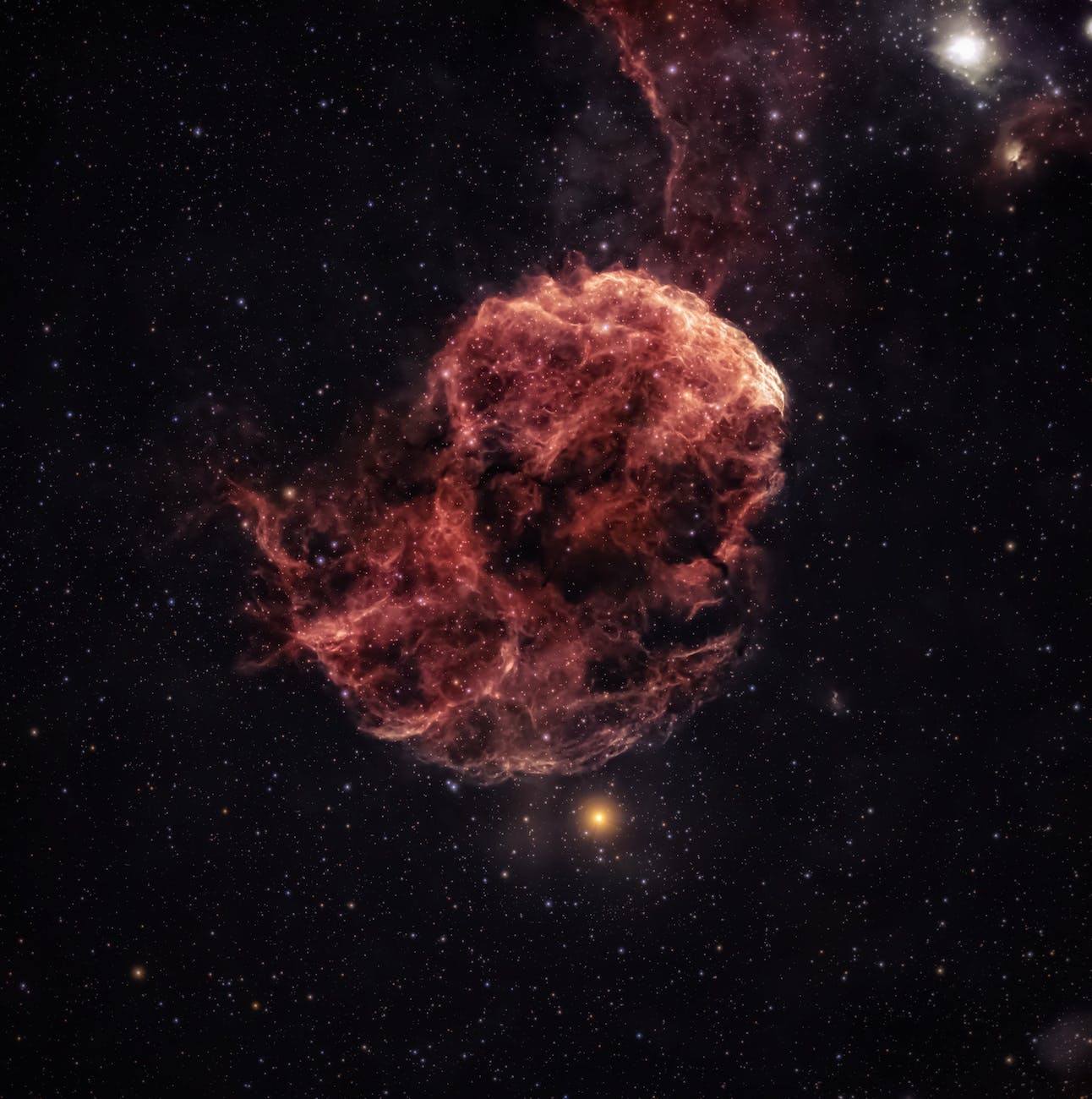Introduction
Supernova remnants (SNRs) are captivating astronomical phenomena that play a crucial role in unraveling the mysteries of the universe. These remnants are the aftermath of powerful explosions that mark the end of a massive star’s life. The study of SNRs provides valuable insights into various aspects of astrophysics, including stellar evolution, nucleosynthesis, cosmic ray acceleration, and the interstellar medium. In this article, we will delve into the significance of supernova remnants and explore the remarkable discoveries they have yielded.
Unveiling Stellar Evolution
Supernova explosions represent the grand finale in the life cycle of massive stars. When a star many times more massive than our Sun exhausts its nuclear fuel, it undergoes a cataclysmic collapse under the influence of gravity. The core of the star implodes, releasing an enormous amount of energy in the form of a supernova explosion. What remains after the explosion is a supernova remnant, which consists of the expanding debris of the star’s outer layers.
By studying SNRs, astronomers can piece together the process of stellar evolution. They can examine the remnants’ composition, structure, and the distribution of elements within them. This knowledge helps us understand how stars form, evolve, and ultimately meet their explosive fate. By analyzing the remnants’ age, size, and characteristics, scientists can classify supernovae into different types, shedding light on the diverse pathways of stellar evolution.
Probing Nucleosynthesis
Supernovae are cosmic factories that forge heavy elements through a process called nucleosynthesis. During the intense explosion, the tremendous pressure and heat generate the conditions necessary for the creation of elements beyond iron in the periodic table. These elements are dispersed into space by the supernova blast wave, enriching the interstellar medium with new elements crucial for the formation of future stars and planetary systems.
SNRs offer a unique opportunity to investigate the nucleosynthesis processes occurring within massive stars. By analyzing the remnants’ chemical composition, scientists can identify the abundance of various elements produced during the supernova explosion. This information enables us to refine our understanding of nucleosynthesis and trace the origin of elements that make up our world, including the carbon, oxygen, and iron essential for life and the building blocks of planets.
Unraveling Cosmic Ray Acceleration
One of the most intriguing aspects of supernova remnants is their role in accelerating cosmic rays. Cosmic rays are high-energy particles, mainly protons and atomic nuclei, that pervade our universe. These particles reach velocities close to the speed of light and possess extraordinary energies far beyond what we can achieve with man-made particle accelerators.
SNRs are believed to be the primary factories where cosmic rays gain their incredible energy. The shockwaves generated during the supernova explosion accelerate particles to near-light speeds, creating a cosmic particle accelerator of unprecedented magnitude. By studying the remnants’ emissions and the properties of the accelerated particles, scientists can better understand the mechanisms behind cosmic ray acceleration and its influence on the dynamics of the universe.
Illuminating the Interstellar Medium
Supernova remnants also play a pivotal role in shaping and influencing the interstellar medium (ISM), the vast space between stars that is filled with gas and dust. The tremendous energy released by a supernova explosion interacts with the surrounding ISM, generating shockwaves that compress and heat the interstellar gas. These shockwaves trigger the birth of new stars, influencing the dynamics of star formation within galaxies.
Through observations of SNRs, astronomers gain valuable insights into the properties of the interstellar medium. By analyzing the remnants’ interactions with the surrounding gas and dust, scientists can study the physical conditions that facilitate the birth of stars. Moreover, the remnants’ emission spectra provide a window into the properties of the ISM, such as its temperature, density, and chemical composition.
Contributions to Cosmology
Supernova remnants have made significant contributions to our understanding of cosmology, the study of the origins and evolution of the universe. In the late 1990s, observations of certain types of supernovae, known as Type Ia supernovae, in distant galaxies led to the groundbreaking discovery that the expansion of the universe is accelerating. This finding earned the Nobel Prize in Physics in 2011 and opened up new avenues for exploring the nature of dark energy, the mysterious force responsible for this accelerated expansion.
SNRs, in turn, contribute to the calibration and understanding of Type Ia supernovae, which are crucial standard candles for measuring cosmic distances. By studying the remnants and their properties, scientists can refine the models used to predict and interpret the behavior of Type Ia supernovae. This, in turn, enhances our ability to estimate distances to distant galaxies accurately, enabling us to probe deeper into the history and evolution of the universe.
Conclusion
Supernova remnants are not mere cosmic debris; they are invaluable tools for investigating the workings of the universe. From unraveling stellar evolution to probing nucleosynthesis, cosmic ray acceleration, and the interstellar medium, SNRs offer a wealth of knowledge and opportunities for discovery. The significance of these remnants in the study of the universe cannot be overstated. By delving into their secrets, scientists continue to shed light on the mysteries that lie within the vast expanse of space.

